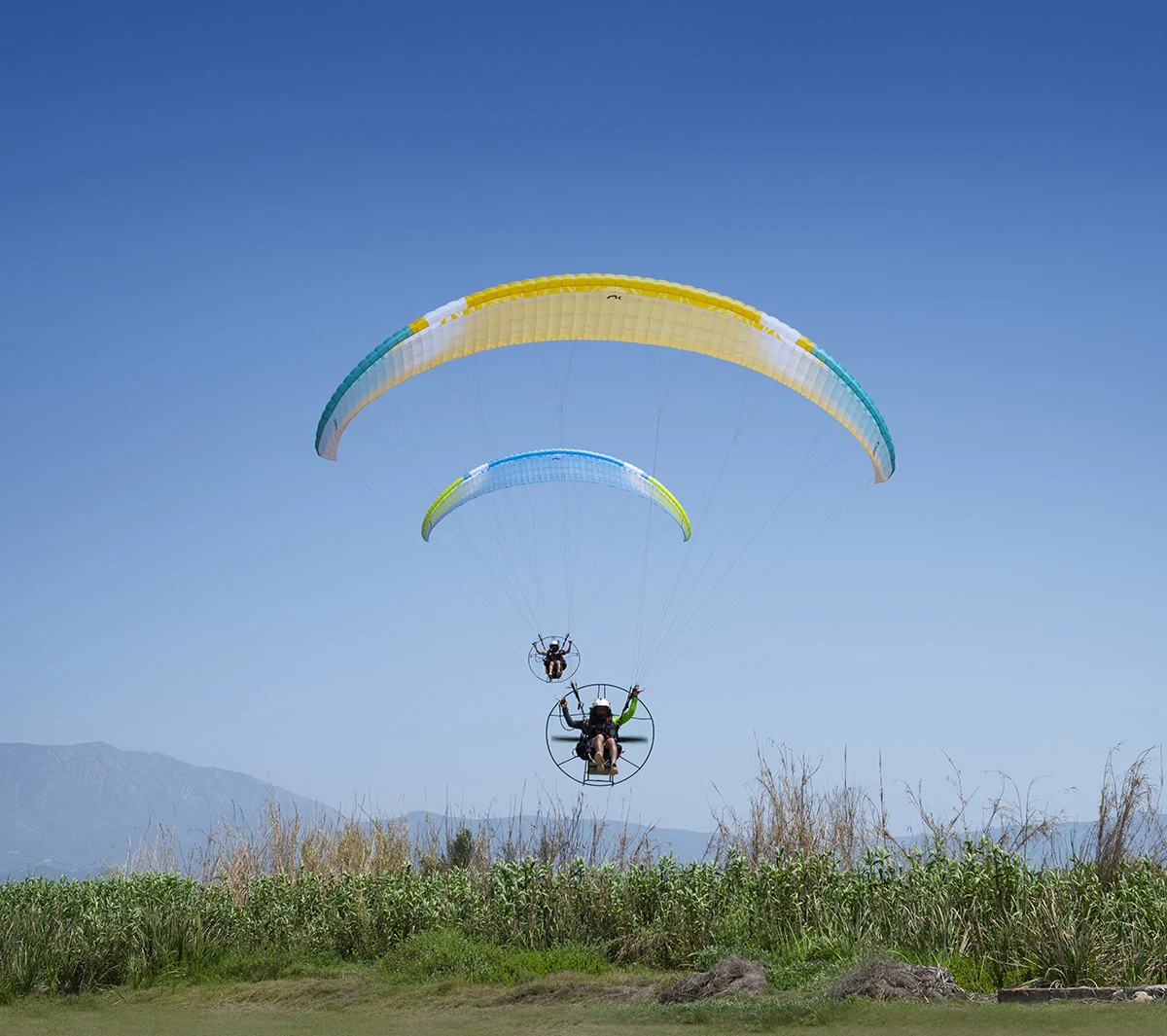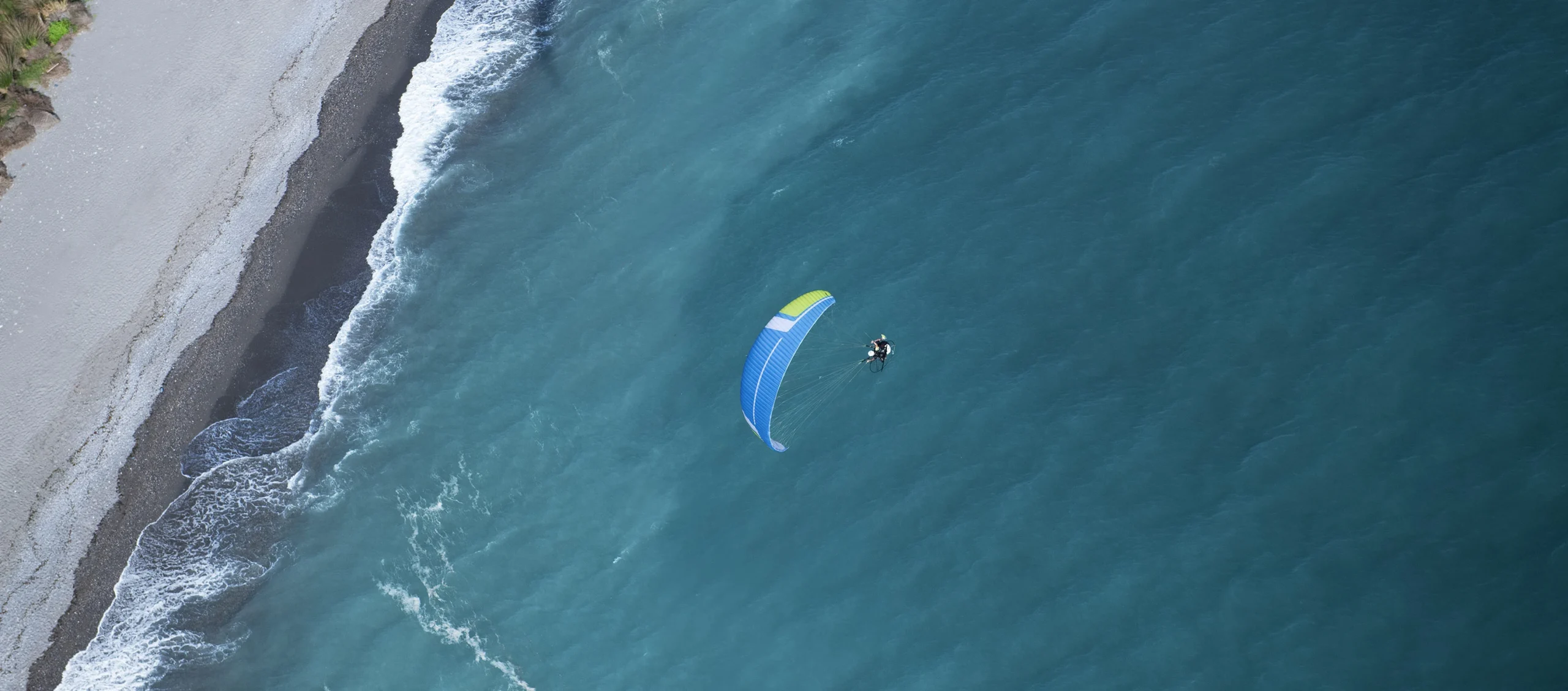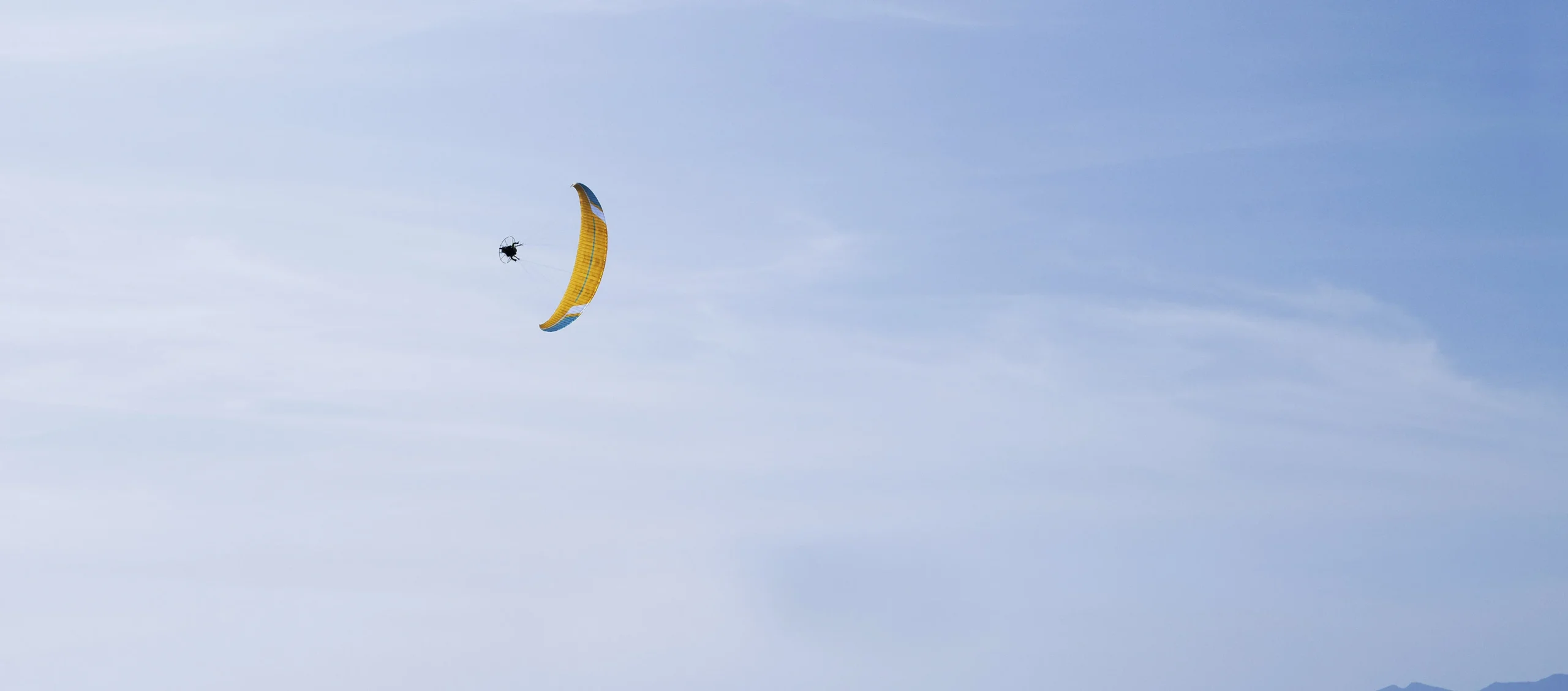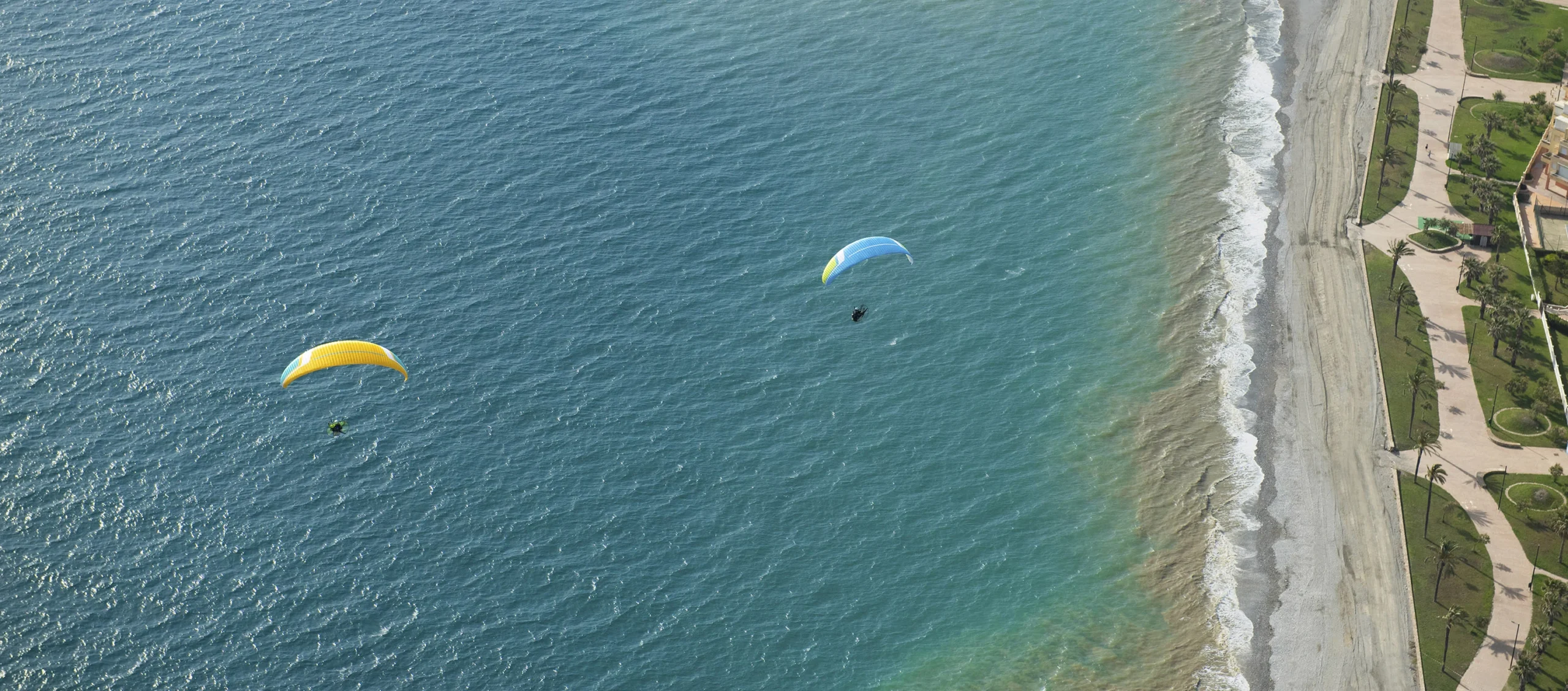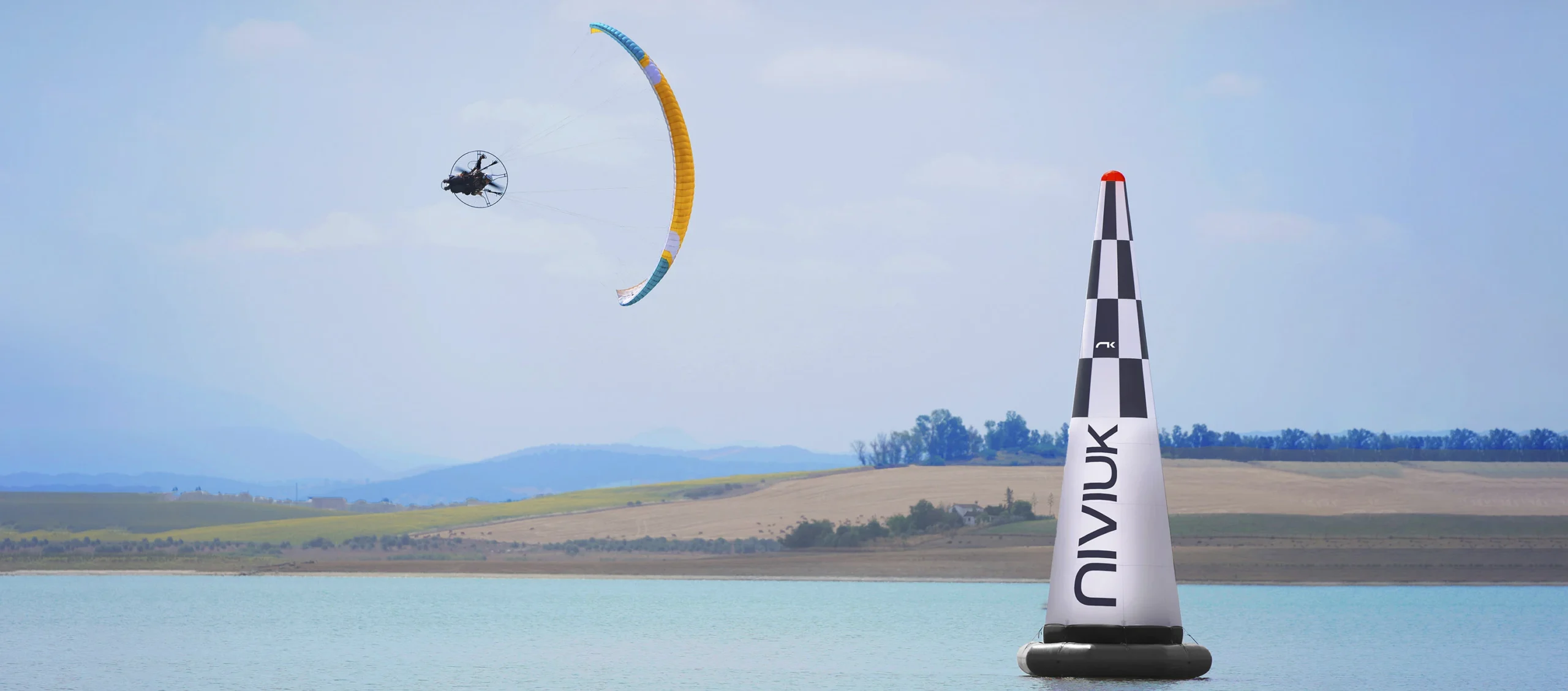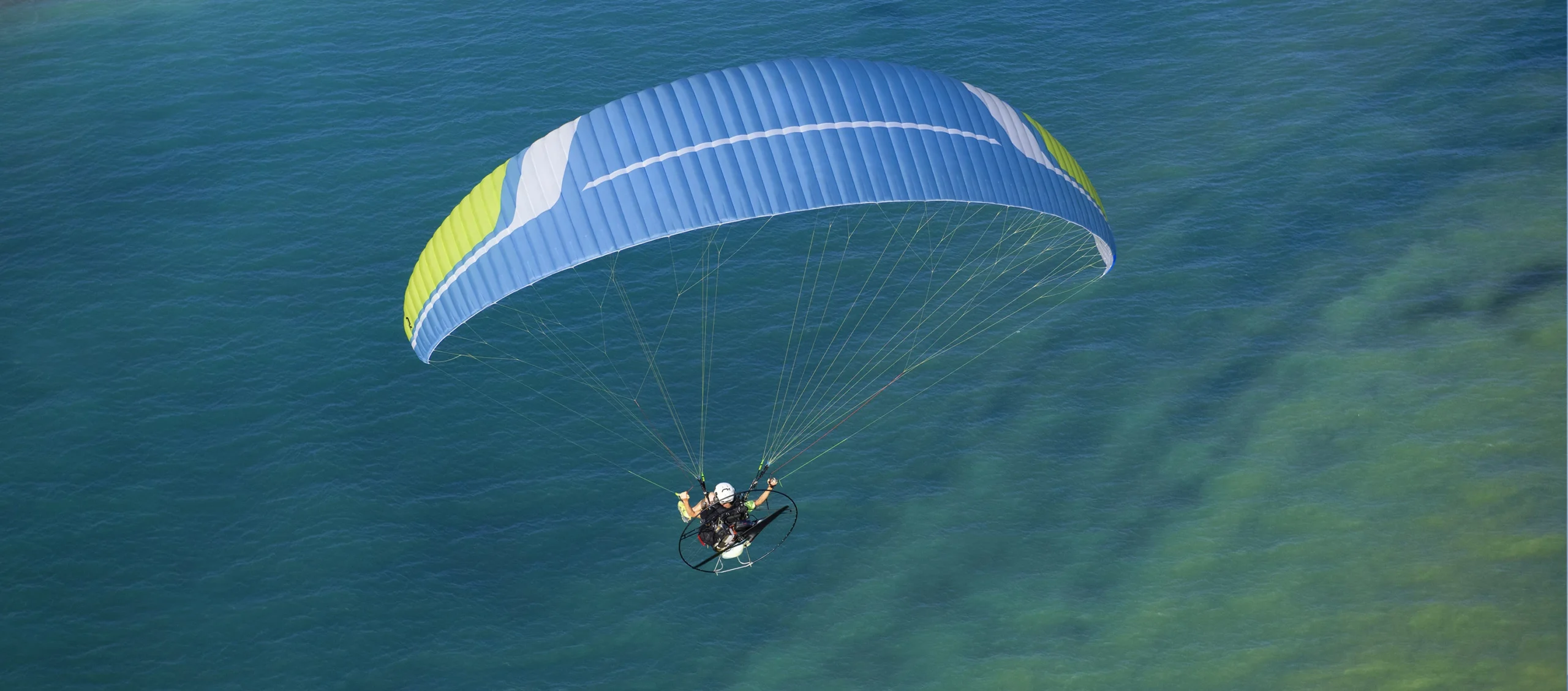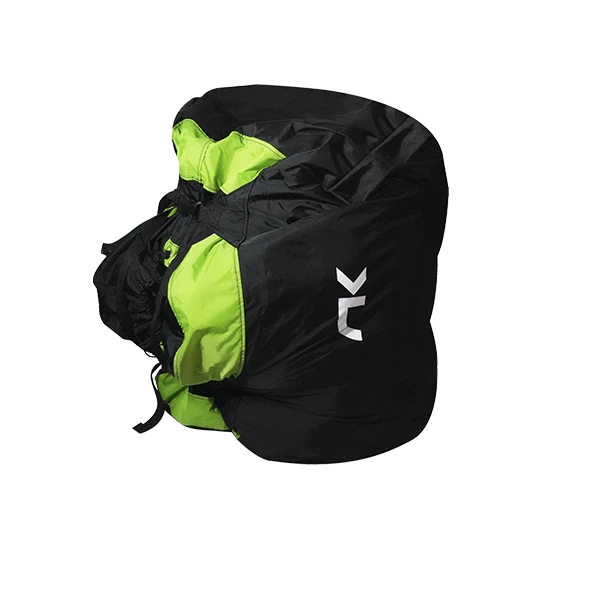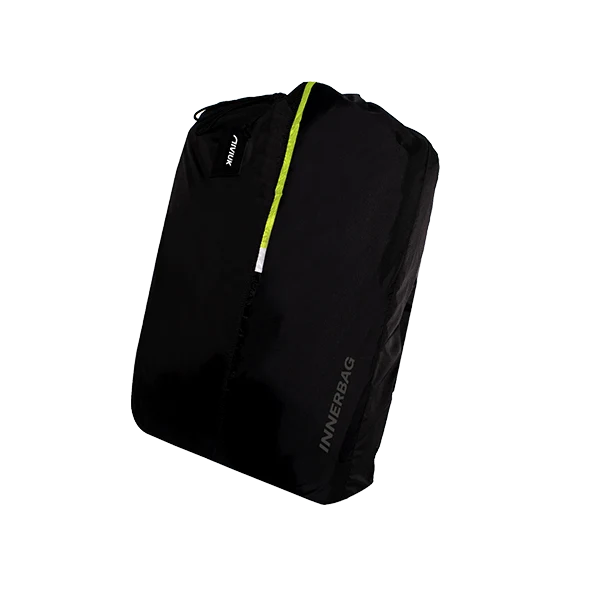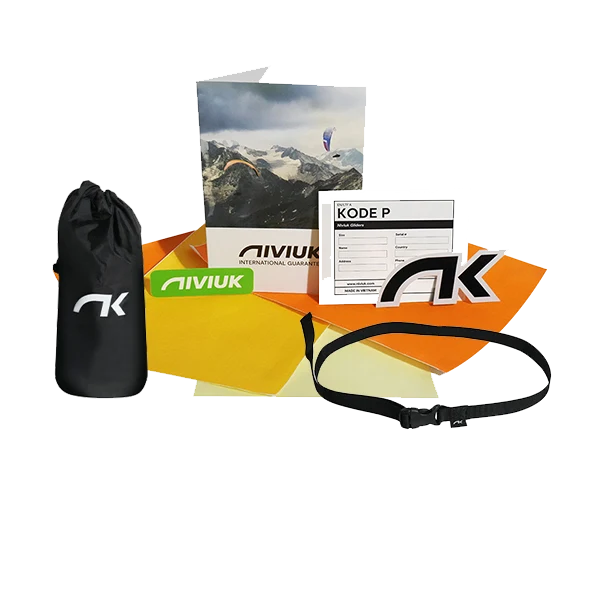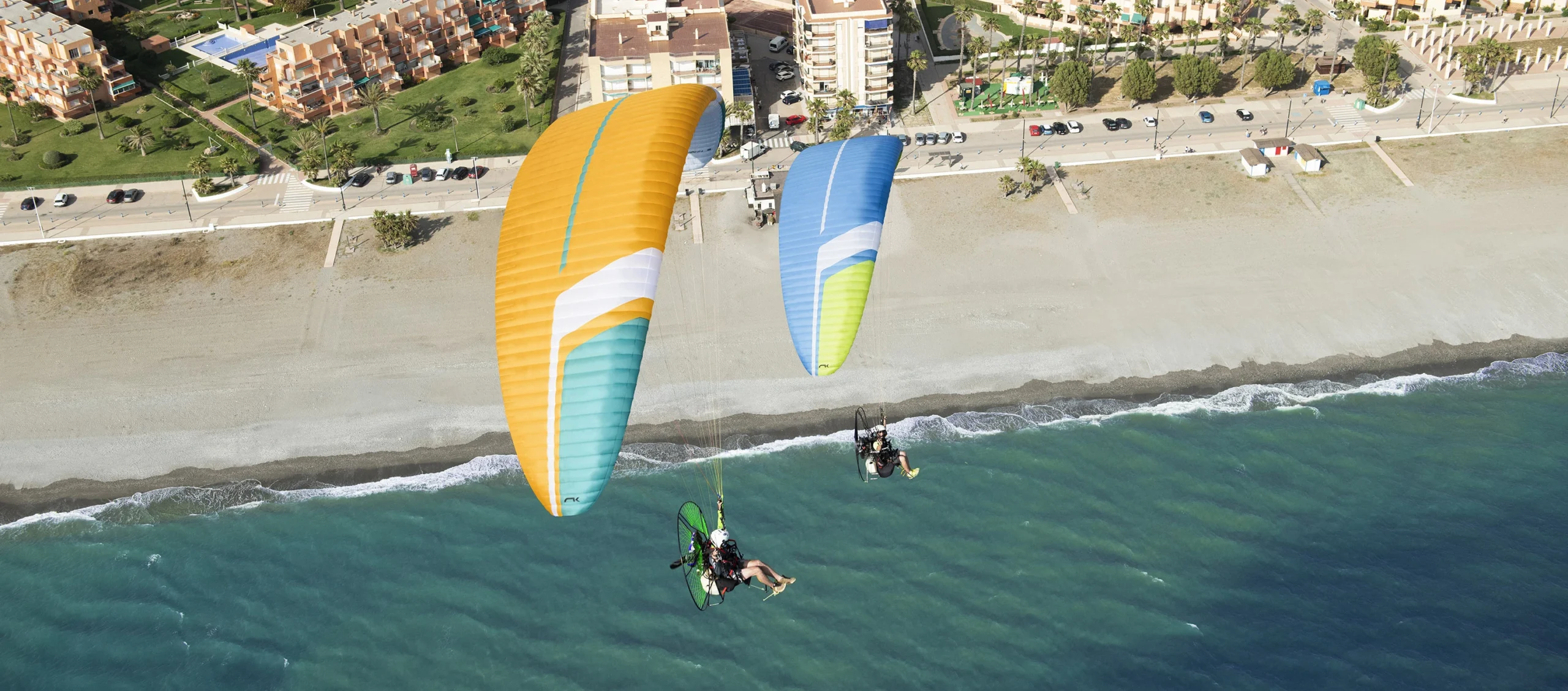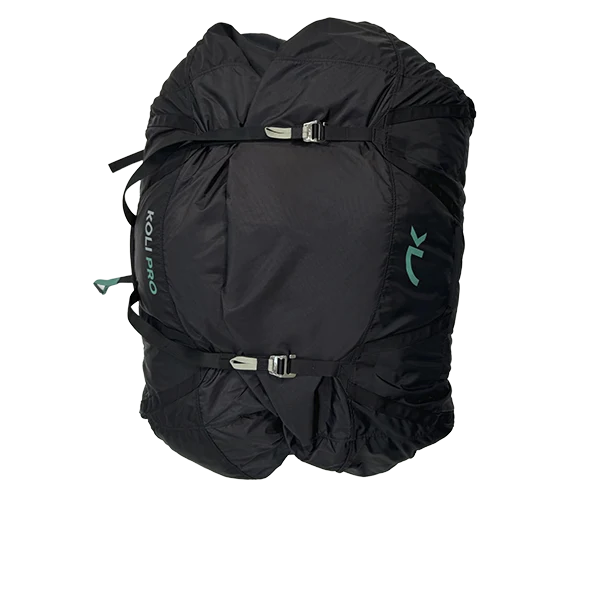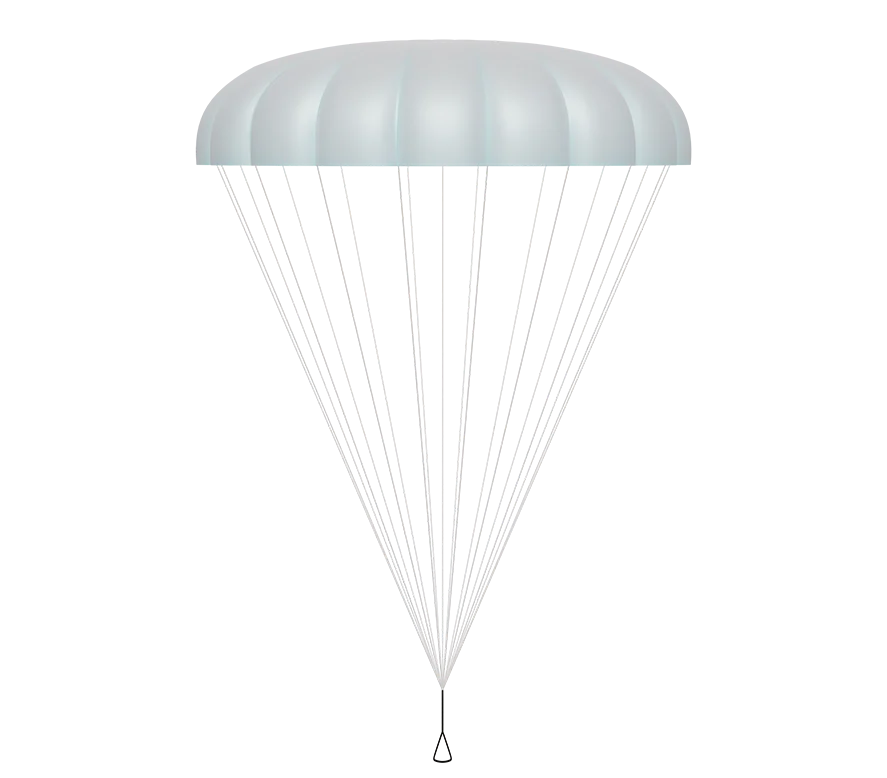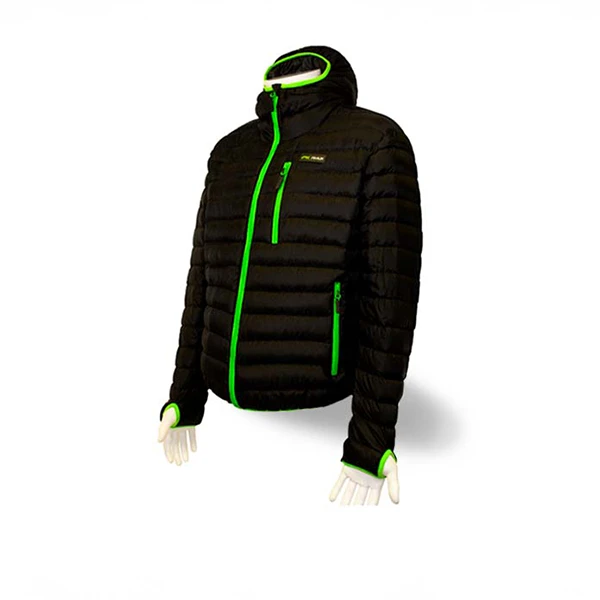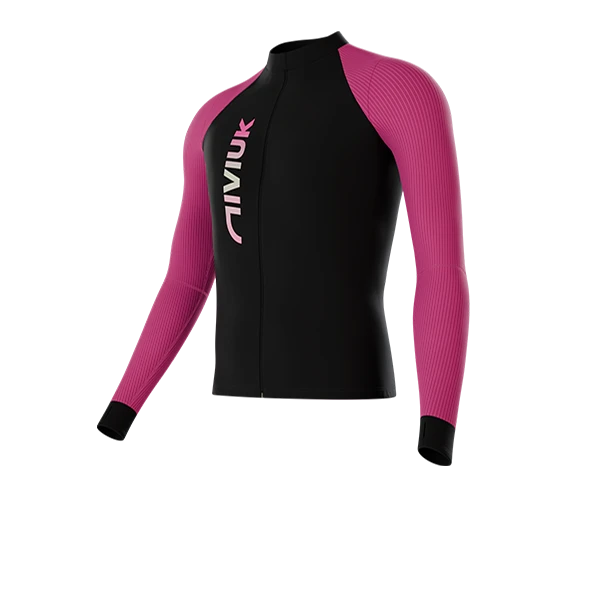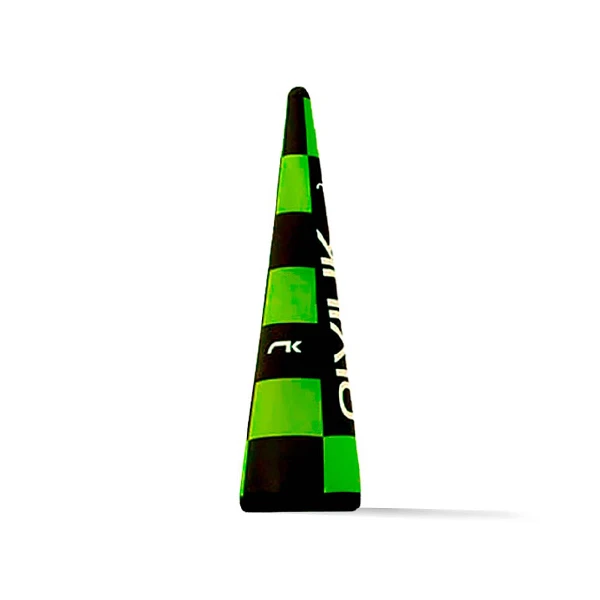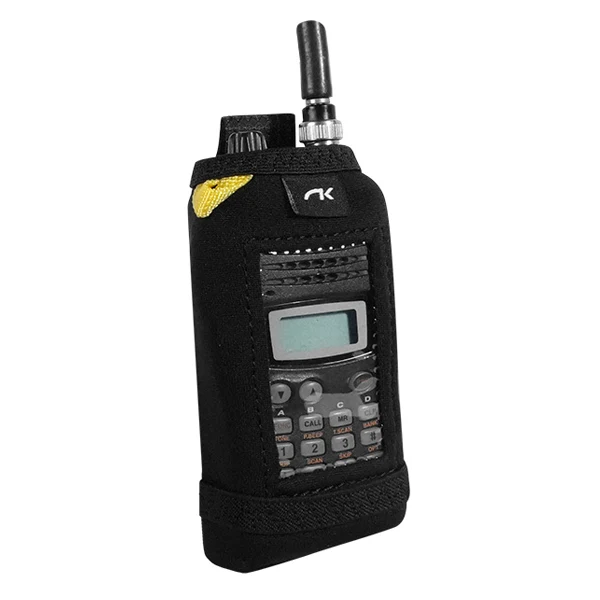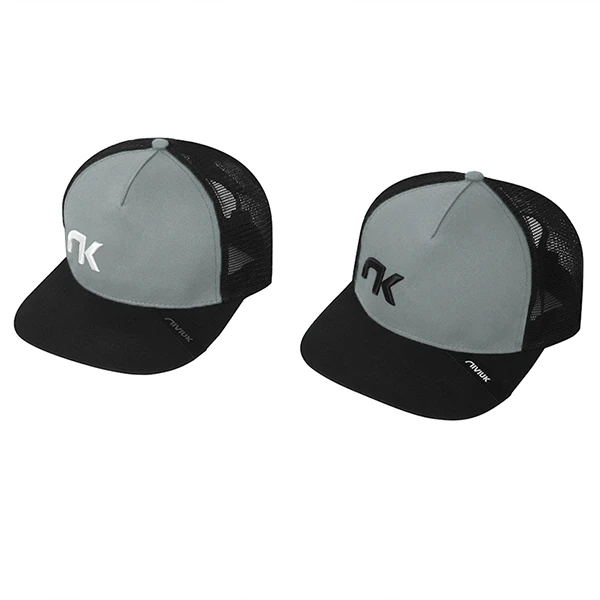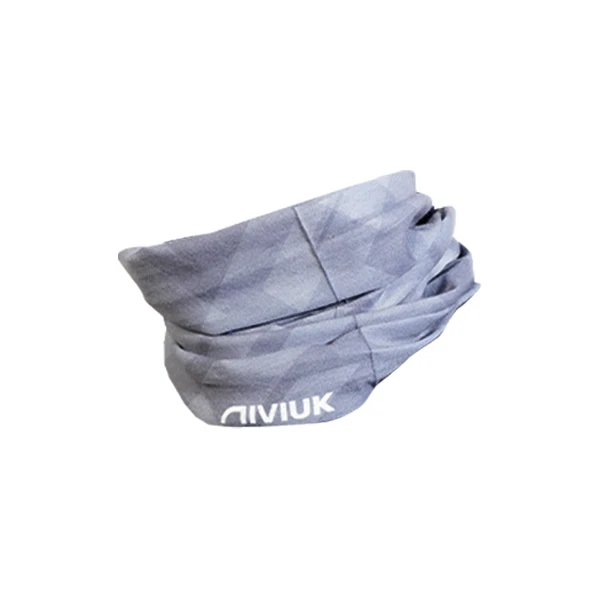Dobermann 3
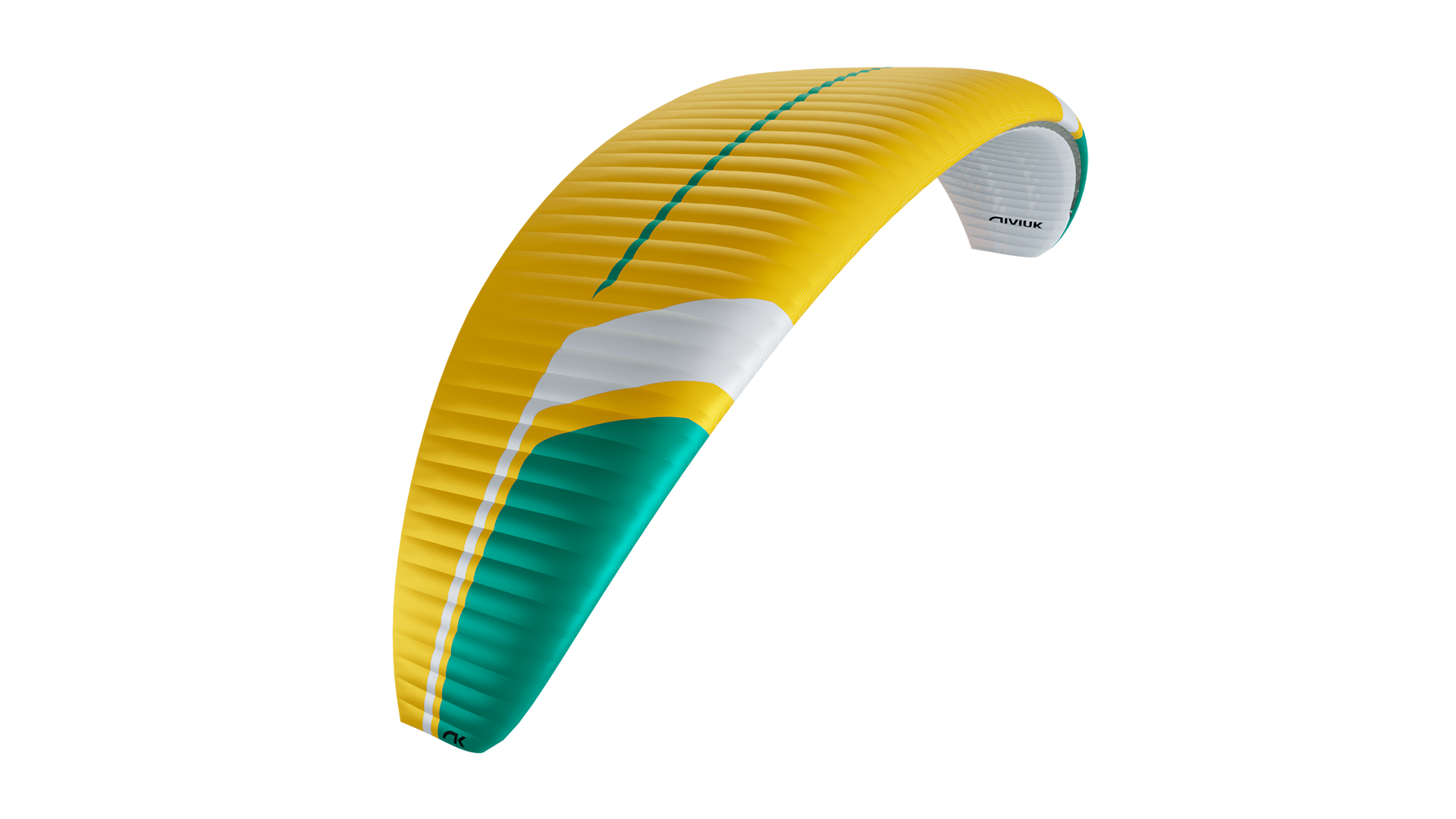
The Dobermann 3 features an optimised reflex profile distribution (centre to wingtip) offering unprecedented stability. Accelerate even more quickly with the PK system and get the best results in competitions with a higher top speed. Excellent speed retention facilitates more efficient turning.
New racing handles with two different grip positions for improved braking control with progressive deceleration and greater precision for comfortable manoeuvring.
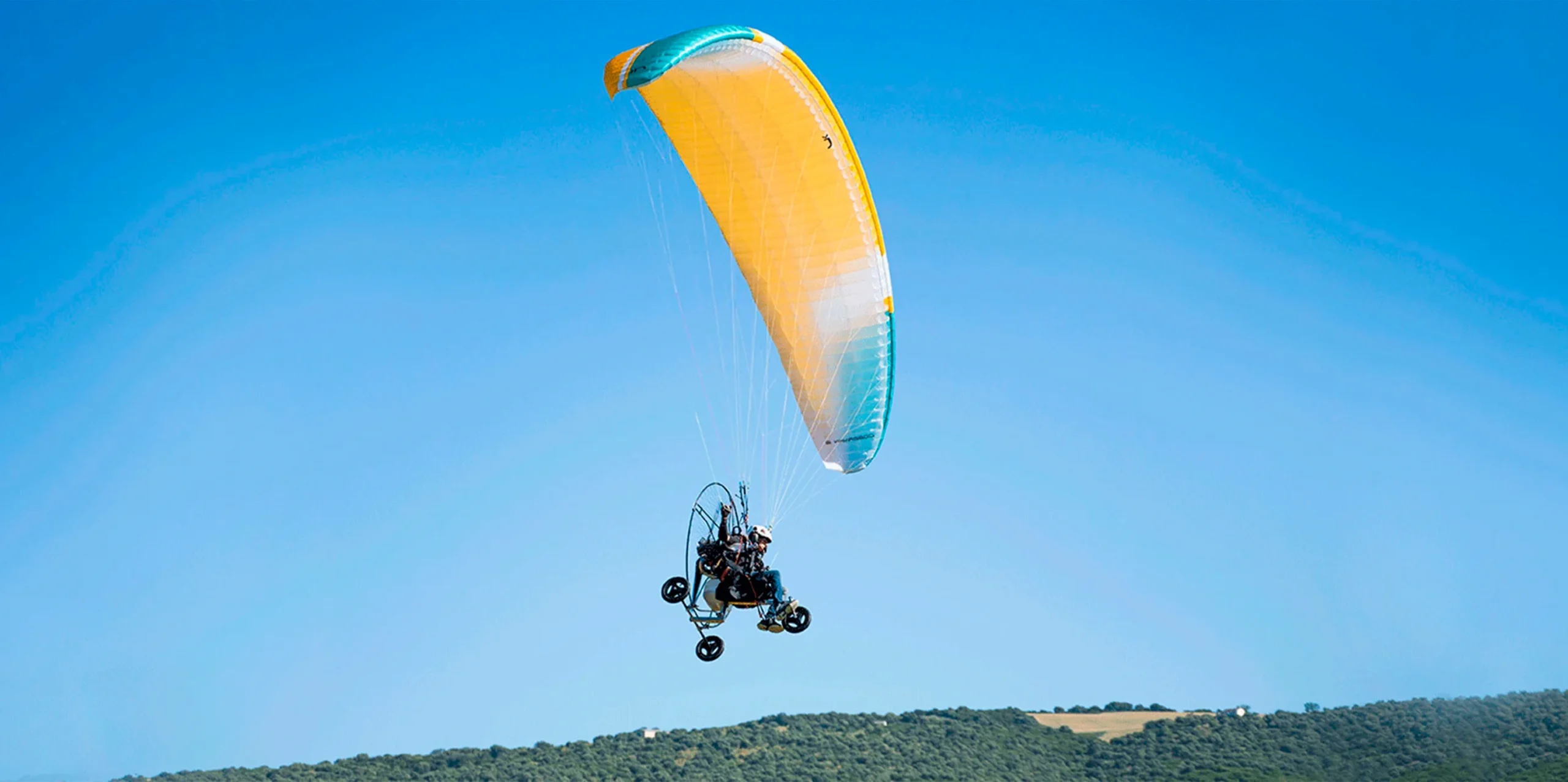
Competition and slalom
A wing aimed at experienced paramotor pilots to reach the top of the podium. Fast acceleration to reduce your time in competitions and slalom races.
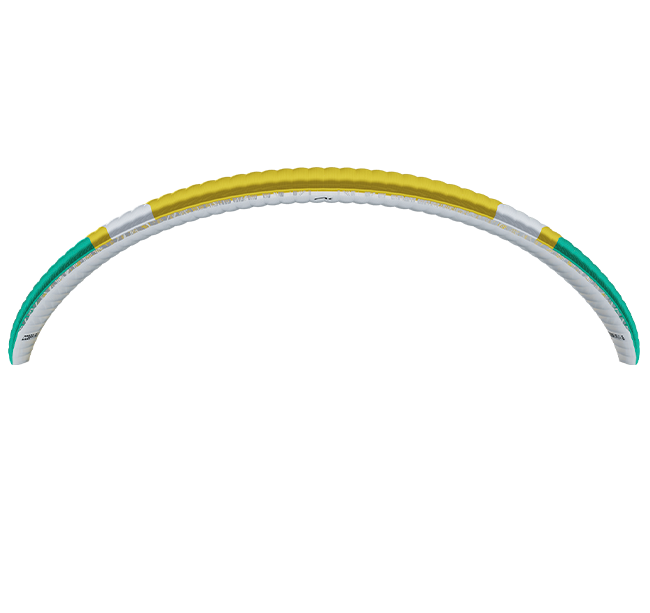
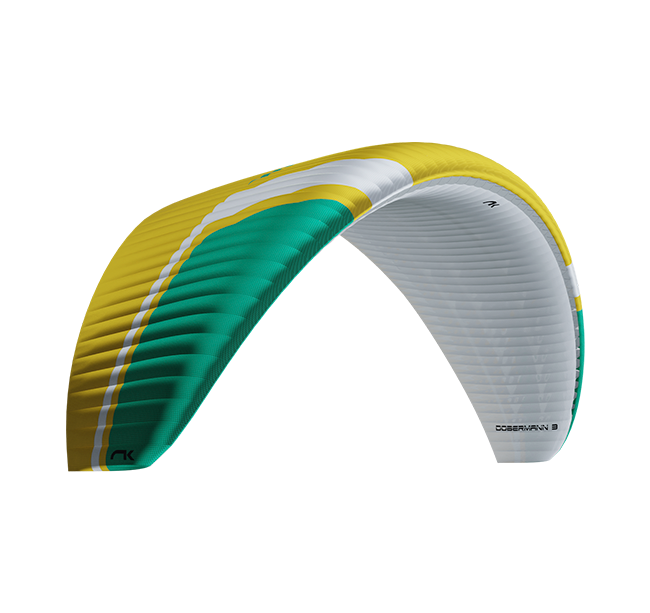
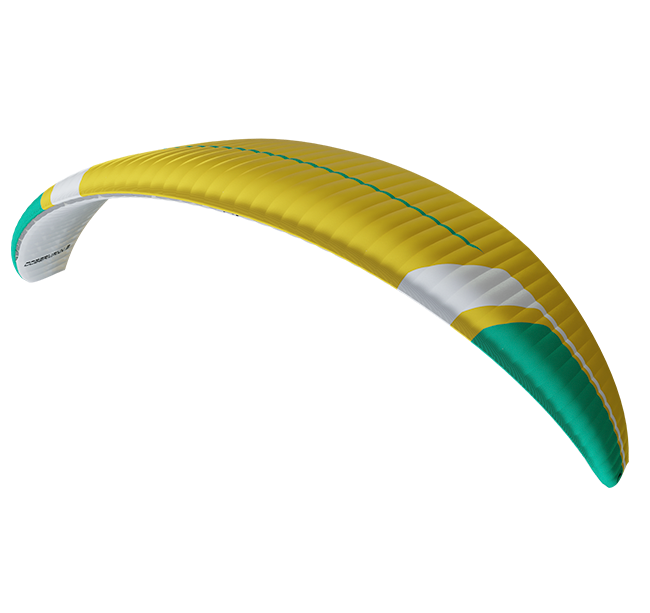
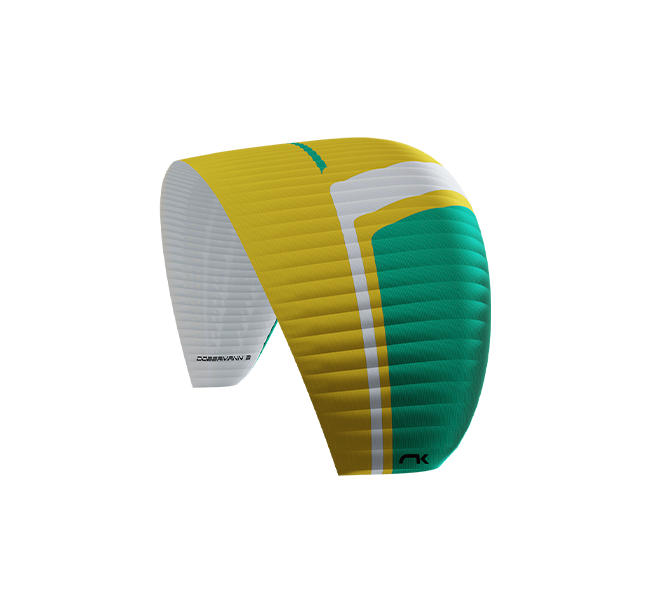
Much higher top speed than its predecessor with less power loading (85 km/h at 8 kg/m2 in size 15).
The PK system allows fast acceleration and an increase of the maximum speed, which increases safety.
Better performance with less fuel consumption.
Better behaviour at low speed for increased agility and turn precision.
The new racing handles (included with the glider) also offer greater control when turning, with tip steering on the outer side of the hand. With a twist of the wrist, the tip angle can be adjusted.
Choose between three different positions: with the new built-in system, you can adjust the height of the pulley and the magnet using the Velcro.
Launches and landings made easier.
With the new line layout this 3-liner has a 25% reduction in line meters compared to the Dobermann 2. This simplifies pre-flight preparation and reduces drag efficiently.
It features a more efficient and stable reflex profile, which, combined with a reduction of lines, reduces drag and fuel consumption while increasing speed.

Much higher top speed than its predecessor with less power loading (85 km/h at 8 kg/m2 in size 15).
The PK system allows fast acceleration and an increase of the maximum speed, which increases safety.
Better performance with less fuel consumption.


Better behaviour at low speed for increased agility and turn precision.
The new racing handles (included with the glider) also offer greater control when turning, with tip steering on the outer side of the hand. With a twist of the wrist, the tip angle can be adjusted.
Choose between three different positions: with the new built-in system, you can adjust the height of the pulley and the magnet using the Velcro.
Launches and landings made easier.

With the new line layout this 3-liner has a 25% reduction in line meters compared to the Dobermann 2. This simplifies pre-flight preparation and reduces drag efficiently.
It features a more efficient and stable reflex profile, which, combined with a reduction of lines, reduces drag and fuel consumption while increasing speed.
3DL technology is an adjustment of the fabric at the leading edge of the wing to control the ballooning and the creases that are generated by the curvature in this area. The leading edge is then divided into sub-panels which are sewn into each of the cells at the front of the paraglider. As a result, the leading edge of the wing is perfectly tensioned, which benefits the wing in performance and durability.
A good comparison is a rugby ball. In order to produce its characteristic oval shape without creases, its cover is made of several panels – not of just one piece.
The application of this innovation, in conjunction with the 3DP, is key to converting the perfect shape from 2D to 3D.
The RAM Air Intake system is based on the inward orientation of the air inlets in the profile so that they allow an optimum internal pressure at all angles of attack.
The result? Having greater internal pressure means better buffering of turbulence, greater consistency of the profile shape across the speed range. Excellent handling at low speed is achieved by allowing the pilot to extend the braking limit, so there is a lower risk of collapse and consequently, greater control and stability.
This technology seeks to implement the best orientation of the cloth on each panel according to its location on the leading edge. If the cloth pattern is correctly aligned with the load axes, the cloth suffers less deformation flight after flight, so the leading edge maintains its shape better and remains stronger over time.
The design of our paraglider and paramotor wings has evolved a lot over the years, with a positive and specific focus on the leading edge.
Thanks to this technology and 3DL, a perfect modelling of the panels and an exact representation from 2D to 3D is achieved.
The DES is a system that allows you to link the trimmers of the rear risers (C and D) with the speed-bar. From the start, the DES holds the wing in the trim position, and as it is released, it accelerates by lowering the A and B-risers and raising the rear risers.
This technology allows us to have all the differential available on the speed-bar, so that we do not have to take the hands off the controls to be able to go from the neutral trimmer position to maximum speed, or vice versa.
In case of high speed collapses, it is very useful to be able to return to the neutral position by releasing the speed-bar without having to close the trimmers manually. In this way flights are more comfortable and safe.
Nitinol is a combination of 50% nickel and 50% titanium. The incorporation of Nitinol rods in the profile increases the performance of the wing, especially in three areas:
- Compared to nylon rods, the weight of the wing is reduced by 13%.
- Nitinol has two essential characteristics: shape memory and enormous elasticity. As a result, the rods retain their optimum shape even after an ultra-compact or incorrect folding, so that the wing is not deformed. This will always be the case unless the radius at the point of curvature is less than 1 cm.
- The leading edge shape is much more rigid and uniform which results in a much more consistent and progressive inflation and therefore an easier take off. The profile is taut at all times, without creases, and fully optimised for all flight phases.
In addition, the rods have a plastic protector at their ends to prevent any damage to the fabric of the wing.
Nitinol is now featured in all our wings.
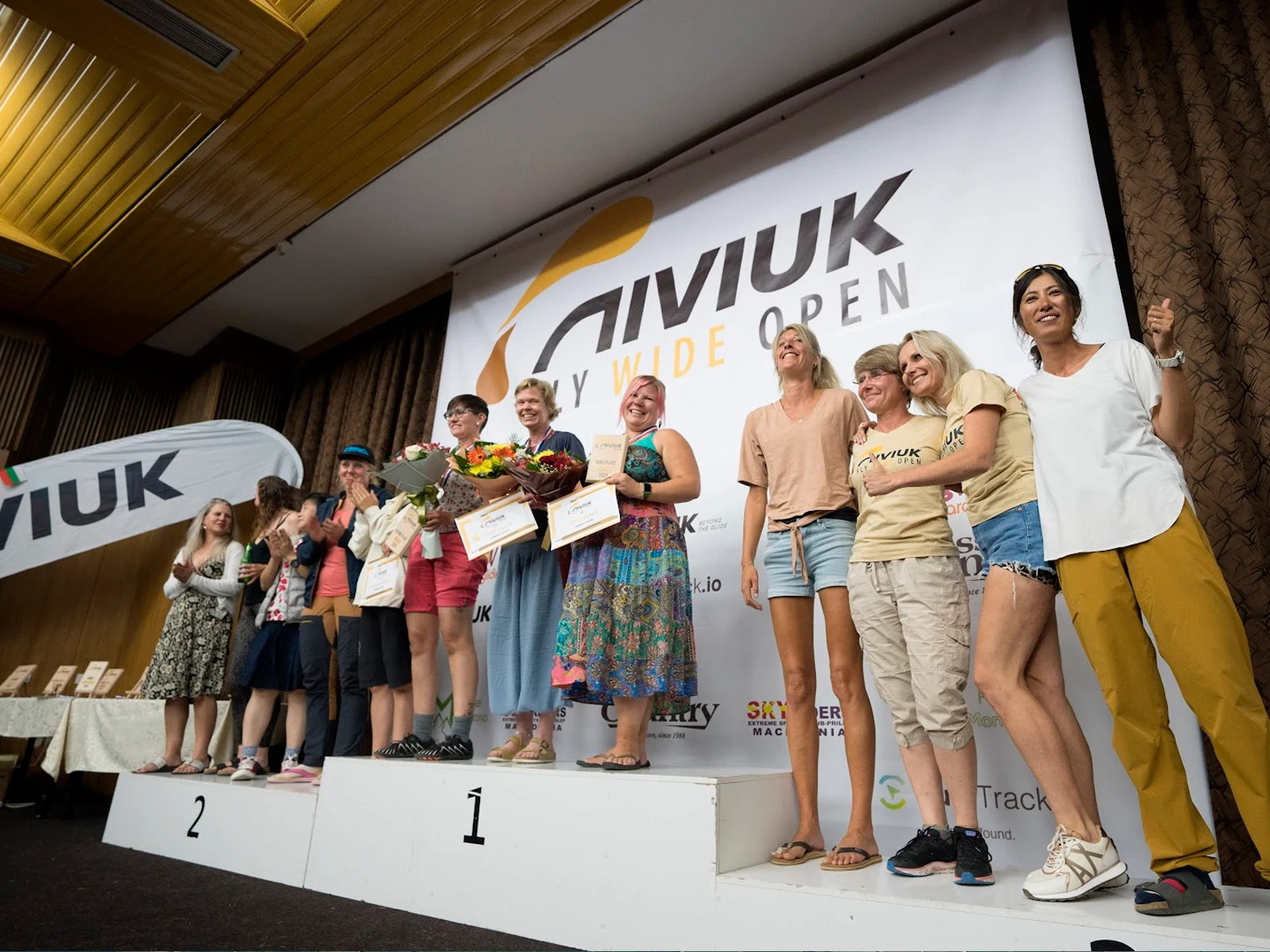
test
tes 2
| 14 | 15 | 17 | 19 | |||
|---|---|---|---|---|---|---|
| CELLS | NUMBER | 64 | 64 | 64 | 64 | |
| ASPECT RATIO | FLAT | 5,75 | 5,75 | 5,75 | 5,75 | |
| PROJECTED | 4,47 | 4,47 | 4,47 | 4,47 | ||
| AREA | FLAT | m² | 14 | 15 | 17 | 19 |
| PROJECTED | m² | 12,11 | 12,97 | 14,70 | 16,40 | |
| SPAN | FLAT | m | 9,0 | 9,3 | 9,9 | 10,4 |
| CHORD | MAXIMUM | m | 1,92 | 1,99 | 2,12 | 2,24 |
| LINES | TOTAL | m | 190 | 198 | 211 | 224 |
| MAIN | 2+1/4/2+1 | 2+1/4/2+1 | 2+1/4/2+1 | 2+1/4/2+1 | ||
| RISERS | NUMBER | A+A’/B/C+C’ | A+A’/B/C+C’ | A+A’/B/C+C’ | A+A’/B/C+C’ | |
| SPEED-BAR | mm | 140 | 140 | 140 | 140 | |
| TRIMMERS | mm | 70 | 70 | 70 | 70 | |
| SPEED RANGE | CLOSED TRIM | km/h | 42 (*7kg/m2) | 42 (*7kg/m2) | 42 (*7kg/m2) | 42 (*7kg/m2) |
| OPEN TRIM | km/h | 54 (*7kg/m2) | 54 (*7kg/m2) | 54 (*7kg/m2) | 54 (*7kg/m2) | |
| TOP SPEED | km/h | 80-85 (*7-8kg/m2) | 80-85 (*7-8kg/m2) | 80-85 (*7-8kg/m2) | 80-85 (*7-8kg/m2) | |
| GLIDER WEIGHT | kg | 3,8 | 4,0 | 4,3 | 4,6 | |
| TOTAL WEIGHT IN FLIGHT | MIN-MAX | kg | 55-120 | 60-130 | 65-150 | 70-170 |
| IDENTIFICATION/CERTIFICATION | 230kg DGAC | 230kg DGAC | 230kg DGAC | 230kg DGAC |
The total weight of the wing may differ ±2% due to variations in the weight of the fabric supplied by the manufacturers.
Dobermann 3
It contains an 8-digit code that, when entered in the MyNiviuk section, can be used for product registration, to carry out procedures and request maintenance.
